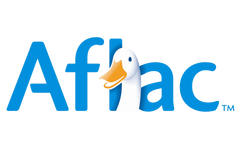Another summer has come and gone, and it’s officially time for all of our young students to get back to learning! One thing that your students might not be learning, though, is how money works. So I’m challenging you to take it into your own hands and commit to spending time with the children in your lives this school year to help them develop financial literacy!
To make it easier for you, I asked the educators in my incredible Little Daymond Educator Network to share any money resources that they themselves had actually created, and they sent me some amazing and creative tools to engage the children in your life when it comes to teaching finance and how money works. Check them out here!
Family Money Ladder, from Shannon Paolucci
“Are you looking for an easy way to teach your kids the value of a dollar that is not another app? Our Family Money Ladder is the solution! It’s an easy, hands-on, visually fun, financial education tool for children aged 3-16. Family Money Ladder inspires kids to ask “How can I help?” instead of “Can I have?”
Using fun stickers and easy-to-understand graphics, it teaches children the value of a dollar, all the important money vocabulary and most importantly how to manage their money. Kids love to move their sticker up the ladder when they earn and save and down the ladder when they spend, lose or give. They get even more excited to move their sticker to The Investment Elevator, an element of Our Family Money Ladder, which gets kids and families talking about investing and understanding the difference between saving money and investing money. Family Money Ladder was created by a mom with a mission to teach children financial literacy everyday in a fun and easy way for families.”
How to Teach Your Kids about Money: K-7 Starter Kit, from Alec Lindenaur
“The Cents of Responsibility method was founded by a family comprised of inquisitive children, proactive parents, involved grandparents, and as luck may have it, two financial advisors. Collectively, we discovered there was no holistic method (available to the public) to make sure our little ones grew into money savvy, financially literate adults. So we decided to create one.
Our mission is to develop and expand that method, and deliver it to parents so they can implement it at their dinner table. Our goal is to create an experience so that parents feel as connected to the message and mission as if they were sitting in our kitchen, working alongside our family. We aim to make it simple and straightforward to implement these important lessons and steer clear from abstract concepts.
Kids are not learning real-life money concepts like budgeting, saving, spending, and more through traditional school programs. It's up to us, parents, to teach our children financial literacy that will last their lifetime.”
Piggy Bank Tutor, from Gloria Mansfield
“One of the greatest life lessons a parent can pass on to their child is to teach them about the value of money. And there is nothing better than knowing your young adult child understands financial literacy after 18 years of raising the joy of your life.
Piggy Bank Tutor is for families with children 3 - 12 yrs. old, who do not have the time, capacity or financial knowledge to teach financial literacy. We provide fun effortless ways to teach financial literacy while enjoying family time connections. Unlike our competitors, who offer self-taught independent lessons, Piggy Bank Tutor provides active engaging lessons with our live PBT Host and our animated Money Math Coaches, LeLe, CeCe and BeBe. We bring parents & kids together for family time fun with an extraordinary financial literacy adventure. Experience the Magic of Family Time with Piggy Bank Tutor!”
Decision Dollars, from Amanda Hauser
“Each summer, I make a list of non-negotiables, things that need to be done without fail. You know, life stuff. Meanwhile, our kids make bucket lists. Big plans, little privileges, experiences, and memory-makers. Then, fake dollars (much like Monopoly money) are earned by performing the non-negotiables on time and without complaint. The kids also take advantage of other earning opportunities that help the family out. Using “Help Wanted” ads, I offer up all sorts of extra chores too. Everything from watering plants to shampooing carpets is a chance to bank a little cash.
The kids pick and choose from the ads however they desire. The more time-consuming the task, the more fake money it pays. Finally, we assign prices to the sought-after bucket list privileges. A sleepover may cost $25 fake dollars, whereas a trip to the amusement park may be upward of $300. In the end, decision dollars prioritize what is important to the children while helping me get stuff done. The kids lose their sense of summertime entitlement and gain an appreciation of hard work. I gain extra time to enjoy them because my responsibilities are somewhat alleviated. Money is valued, and choices remain in the kids’ control. Win-win!”
M Is for Money, by Rob Phelan
“M is for Money will introduce a new money related word for each letter of the alphabet, define it in an age appropriate way, and then place the words in a relevant context through a mini story and illustration. The reader will be able to grow with the book as they begin with letter recognition and a new word, all the way through to using the word in context correctly.
There is a guiding character, Stash the Squirrel, who encourages the reader to think and engage in conversation with the adult reading alongside them. The questions asked will stimulate thoughts about what the purpose of money is, how it can be used, how it can be earned and saved, and what kind of relationship we want to have with money as we grow.
The journey to bring this book to life has been incredibly fun and a wonderful learning experience as I stretch my own limits of comfort to learn something new. This is exactly what I want my son and all kids to be able to do.”
Keep Your Coins with Calvin Journal: Track and Save with Calvin, by Shondra M. Quarles
“A Financial Literacy Resource Created for Kids! This interactive journal will help you keep track of your financial habits. What are your wants and needs? Do you want to spend, save, invest, or donate? How can you earn the money you need to reach your financial goals? Your tracking sheets are a visual reminder of your progress. Set a goal and choose a time frame to achieve your goal. Color a pig each time you reach a milestone. Once you achieve your goal, consider your next goal. Younger kids can use the coin tracking sheet to identify, match, sort, count, or add coins. There are also fun and engaging challenges that can be done weekly, monthly or yearly.”
We All Learn Differently Organization , led by Bari Levin.
(This is for all the students out there who (like I did!) might be struggling to keep up with their classmates, whether it’s because of an established learning disability or just a different way of comprehending materials.)
“We All Learn Differently is a non-profit grant-funded campaign focused on creating a positive and accepting middle school community where every student is valued and celebrated for who they are. We invite all middle school students, teachers and parents to join us in celebrating the fact that we all learn differently, and to help us promote a more positive and inclusive learning environment for everyone.
The I Am Able Foundation is spearheading this campaign with six additional supporting non-profit partners including: Educating All Learners Alliance, Learning Heroes, National Parents Union, IEP & Me, Kindred Communities and Disability Network Southwest Michigan.”
Little Daymond Learns to Earn
And of course, I recommend Little Daymond Learns to Earn as a tool to open up money discussions with your children. I’m on a mission to make financial literacy accessible across the country,
















